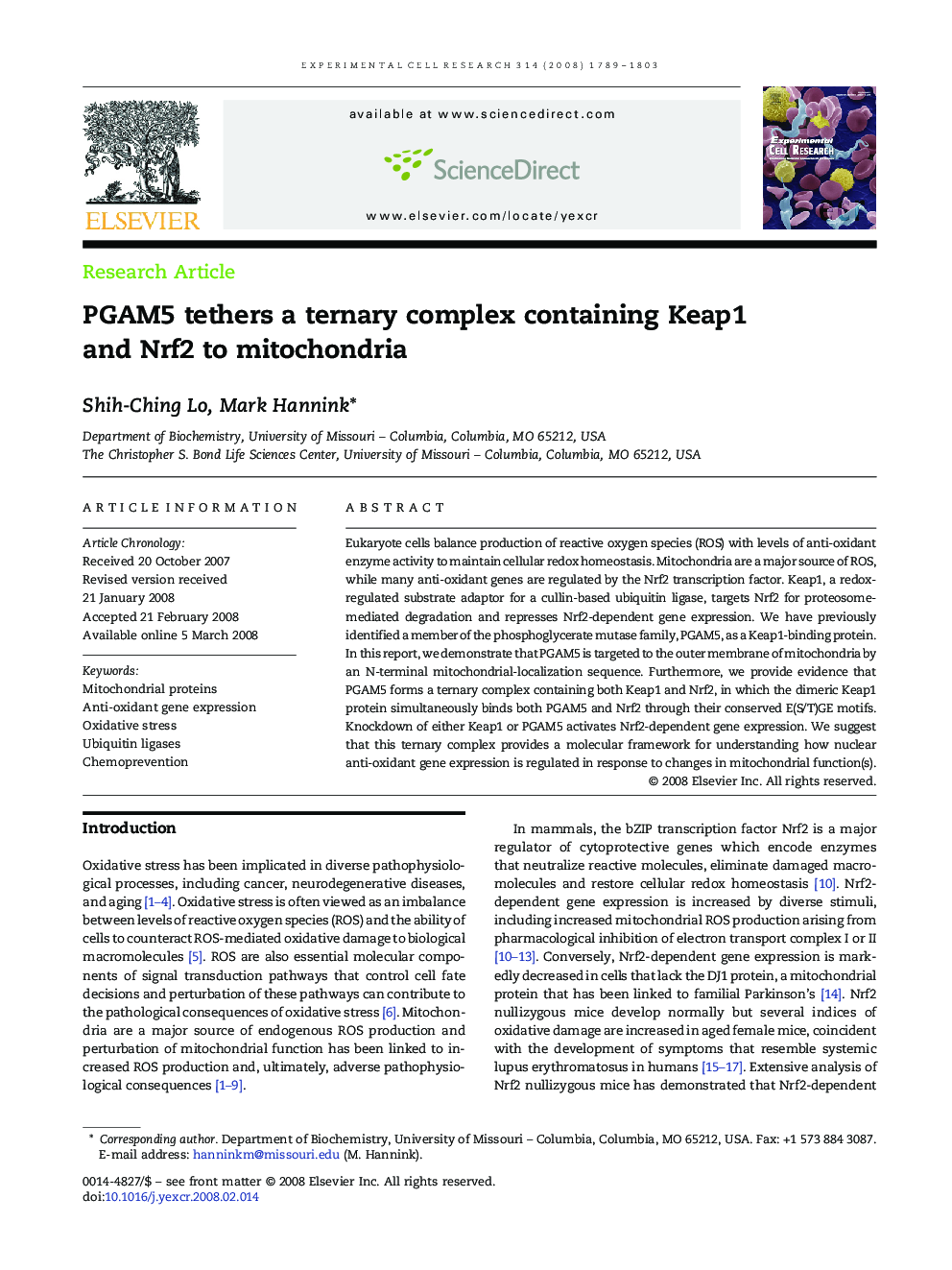| Article ID | Journal | Published Year | Pages | File Type |
|---|---|---|---|---|
| 2132217 | Experimental Cell Research | 2008 | 15 Pages |
Eukaryote cells balance production of reactive oxygen species (ROS) with levels of anti-oxidant enzyme activity to maintain cellular redox homeostasis. Mitochondria are a major source of ROS, while many anti-oxidant genes are regulated by the Nrf2 transcription factor. Keap1, a redox-regulated substrate adaptor for a cullin-based ubiquitin ligase, targets Nrf2 for proteosome-mediated degradation and represses Nrf2-dependent gene expression. We have previously identified a member of the phosphoglycerate mutase family, PGAM5, as a Keap1-binding protein. In this report, we demonstrate that PGAM5 is targeted to the outer membrane of mitochondria by an N-terminal mitochondrial-localization sequence. Furthermore, we provide evidence that PGAM5 forms a ternary complex containing both Keap1 and Nrf2, in which the dimeric Keap1 protein simultaneously binds both PGAM5 and Nrf2 through their conserved E(S/T)GE motifs. Knockdown of either Keap1 or PGAM5 activates Nrf2-dependent gene expression. We suggest that this ternary complex provides a molecular framework for understanding how nuclear anti-oxidant gene expression is regulated in response to changes in mitochondrial function(s).
